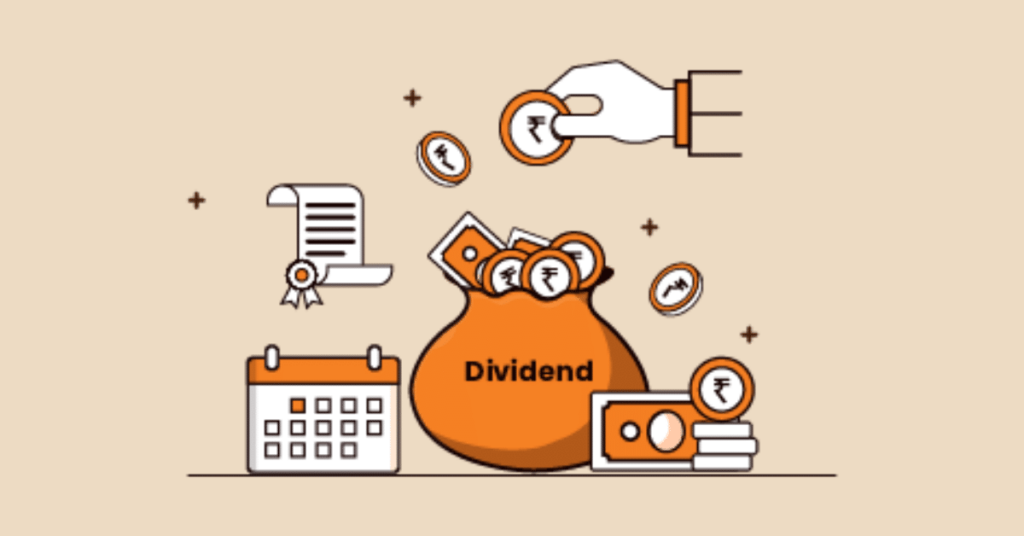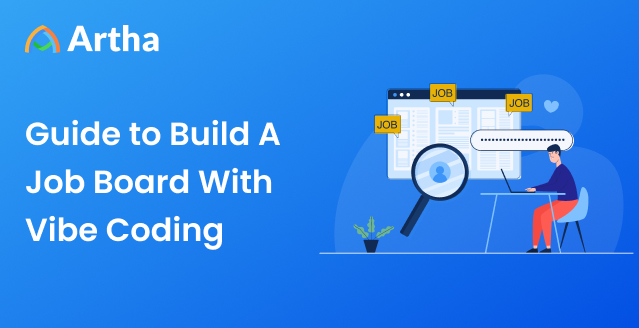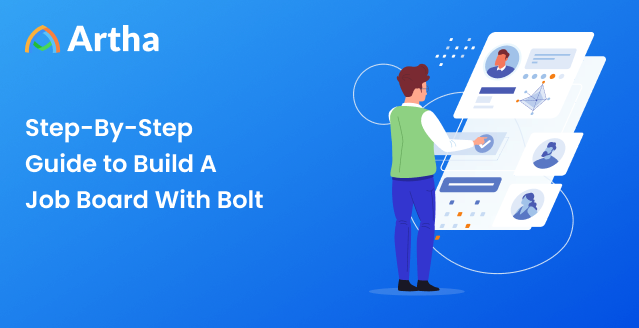Introduction
Alex had it all—or so it seemed. As a marketing executive in a Fortune 500 company, he was living the dream. A six-figure salary, prime city apartment, climbing the corporate ladder with a confident stride. The business-class perks and expense-account dinners? He was living the life many aspired to.

Then 2020 hit. The world screeched to a halt. Lockdown descended, and suddenly, the ‘dream’ felt less like a reality and more like a fragile illusion. Overnight, everything changed. Markets crashed, companies scrambled to cut costs, and even the most seasoned professionals weren’t safe from layoffs. Alex wasn’t fired, but the uncertainty was enough to shake him. For the first time, he asked himself:
What happens if my paycheck stops?
For the first time, he realized his entire lifestyle, his carefully constructed world, depended on a single paycheck—one that wasn’t as secure as he had once believed.
That’s when the late-night research sessions began. He started looking for ways to earn money that comes in without working all the time. And that’s when he discovered passive income—not the overnight riches sold by online gurus, but real, sustainable ways to generate income without trading more hours for it.
Now, let’s assume you are Alex. How would you navigate this journey? Where do you start? Which passive income sources actually work? And most importantly, how do you make smart, safe decisions without falling for get-rich-quick schemes?
Let’s break it down. Here are the Top 10 ways to earn passive income.
A. Digital Asset Strategies: Turning Your Knowledge into Passive Income
1. Data-Driven Content Monetization
Suppose You Have Invested in Creating an Online Course
You’ve spent years building expertise in your field—whether it’s marketing, like Alex, or any other professional skill. Now imagine turning that knowledge into a digital product that earns money even when you’re not working. You decide to invest time and resources into creating an online course or hosting paid webinars to share your insights. This isn’t just about dumping information; it’s about structuring your experience into valuable lessons that people are willing to pay for. You’re essentially packaging your professional journey into a product that can be sold multiple times.
What Is It
Data-driven content monetization involves creating and selling educational content like:
- Online courses (on platforms like Udemy, Teachable, or Coursera): These are structured learning programs that users can complete at their own pace. They often include video lessons, downloadable resources, and quizzes.
- Webinars and workshops: Live or recorded online sessions that offer interactive learning experiences. These can be one-time events or recurring series.
- E-books and exclusive research reports: Written content that provides in-depth knowledge on specific topics. These can be sold individually or as part of a subscription.
Instead of working hourly for money, you create once and sell indefinitely. This means that after the initial effort of creating the content, you can earn passive income from ongoing sales.
How Much Can You Earn
- The global e-learning market is projected to hit $457.8 billion by 2026. This massive market indicates a strong demand for online educational content.
- Course creators earn between $5,000 and $50,000 per month, depending on their niche and audience (Thinkific). Factors influencing earnings include the course’s topic, its quality, and the effectiveness of its marketing.
- Webinars can generate $2,000–$10,000 per session if targeted at professionals looking for niche skills (WebinarNinja). This highlights the potential for high-value, targeted online events.
Steps to Get Started with an Online Course
Step 1: Identify a Profitable Topic
- Research trending topics in your industry using Google Trends, LinkedIn, and Udemy’s marketplace insights. Look for topics with high search volume and low competition.
- Validate demand by surveying your LinkedIn network or industry peers. Ask them what skills they want to learn and what problems they need to solve.
Step 2: Create a Simple but Valuable Course
- Start with a Minimum Viable Course (MVC)—a 2-3 hour masterclass before building a full course. This allows you to test the market and gather feedback before investing too much time.
- Use tools like Teachable, Kajabi, or Podia to host your content. These platforms provide user-friendly interfaces and marketing tools.
Step 3: Price It Strategically
- Offer a low-cost version ($49–$99) for mass appeal or a high-ticket version ($499+) with exclusive perks. Consider offering different pricing tiers to cater to various budgets.
- Bundle webinars or coaching sessions for added value. Offering additional resources can increase the perceived value of your course.
Step 4: Market It Effectively
- Promote through LinkedIn articles, YouTube snippets, and email marketing. Use a multi-channel approach to reach a wider audience.
- Run limited-time discounts and early-bird offers to attract first buyers. Creating a sense of urgency can boost sales.
Things to Keep in Mind to Stay Safe
- Choose a niche with demand: Check what courses are already selling. Analyze competitor courses and identify gaps in the market.
- Don’t overproduce: A short, actionable course often sells better than an exhaustive one. Focus on delivering practical skills and solutions.
- Protect your content: Use copyright disclaimers and watermark materials. Implement measures to prevent unauthorized copying and distribution.
- Market effectively: Without a strong marketing plan (social media, LinkedIn, email lists), even the best courses won’t sell. Invest time in building an audience and promoting your course.
2. Automated Digital Tools for Productivity
Suppose You Have Invested in a Niche Software Tool
You notice that your industry has a common pain point—a process that takes too much time or lacks automation. Instead of waiting for someone else to solve it, you decide to develop a digital tool that professionals can use. This could be a simple browser extension, a mobile app, or a web-based software solution.
What Is It?
This strategy involves creating digital tools, templates, or software solutions to sell to businesses or individuals. These tools automate tasks, streamline workflows, or provide valuable data insights.
- Simple SaaS products (subscription-based software): These are web-based tools that users pay a monthly or annual fee to access.
- Marketing automation tools: These tools automate tasks like social media scheduling, email marketing, and lead generation.
- Financial calculators or data trackers: These tools help professionals analyze financial data or track key performance indicators.
For instance, being in marketing, Alex could create a tool that automatically generates social media posts for different platforms or a tool that helps to find trending hashtags. These tools save time and improve efficiency for marketing professionals.
How Much Can You Earn?
The global digital productivity tools market is valued at $62 billion in 2024, growing at 12% annually. This indicates a large and growing market for digital productivity tools. Some simple digital tools generate $10,000+ per month with a low-cost setup. This highlights the potential for high profit margins with minimal overhead.
SaaS businesses can scale to $1M+ per year with consistent user growth. This demonstrates the scalability of digital tools with a subscription-based model.
Things to Keep in Mind to Stay Safe
- Validate the idea first: Survey potential users before building. Conduct market research to ensure there’s demand for your tool.
- Start with a minimum viable product (MVP): Launch a simple version and refine based on feedback. This allows you to gather user feedback and iterate on your product.
- Outsource smartly: You don’t need to be a coder; hire freelancers or use no-code platforms. Leverage external resources to reduce development costs.
Job Board: Connecting Talent with Opportunity (and Earning Along the Way)
3. Niche Job Boards: Build a platform, Let It Work For You
Suppose You Have Invested in Creating a Niche Job Board
The Inspiration:
Alex, observing the frustrations of marketing professionals struggling to find truly specialized roles, saw an opportunity. He envisioned a platform—a career catalyst—that would go beyond simple job listings. He wanted to create a hub where talent and opportunity intersected seamlessly, a place where professionals could find not just jobs, but career-defining pathways.
What It Is
This isn’t just another generic job portal. This is about building a specialized online space that:
- Targeted job listings: Focus on a specific industry, like marketing, finance, or tech.
- Multiple income streams: Offer paid features like featured listings, premium licenses, sponsored ads and more.
The goal? To be the go-to resource for professionals and employers in a specific field, mirroring the focused approach that platforms like Artha take in empowering career growth.
How Much Can You Earn?
The global online recruitment market is projected to reach $43.3 billion by 2027 (Statista). This massive market indicates significant potential for niche job boards.
A successful niche job board can generate revenue through
- Job listing fees: Charging employers to post job openings.
- Premium features: Offering paid upgrades for enhanced visibility and access.
- Advertising: Displaying targeted ads to your audience.
- Affiliate partnerships: Collaborating with relevant tools and services.
A well-established niche job board can earn anywhere from a few thousand to tens of thousands of dollars per month, depending on its size and engagement.
Steps to Get Started
Step 1: Choose a Profitable Niche
- Identify a niche with a high demand for specialized skills and a lack of dedicated job boards.
- Validate your niche by researching job postings, industry forums, and LinkedIn groups to ensure a steady flow of opportunities.
Step 2: Launch a User-Friendly Platform
- Use white-label job board software like Artha to avoid building a platform from scratch.
- Focus on providing a seamless experience for both employers and job seekers, ensuring easy navigation and efficient job matching.
Step 3: Attract Job Seekers and Employers
- Promote your job board through social media, industry events, and partnerships with relevant organizations.
- Offer premium features such as smart job backfilling, AI-driven automation, and chat options to minimize manual work.
Step 4: Monetize Your Platform Strategically
- Start with affordable job listing fees and gradually introduce premium features as your platform gains traction.
- Explore advertising and affiliate partnerships to diversify your revenue streams and increase profitability.
Things to Keep in Mind to Stay Safe
- Focus on quality over quantity: Prioritize attracting high-quality job listings and candidates instead of flooding the platform with irrelevant postings.
- Always Choose the best job board partner: One that will allow you to go live in minutes without sacrificing quality and give excellent support.
- Provide excellent customer support: Ensure quick responses to inquiries and efficiently resolve issues to maintain user trust.
Stay up-to-date with industry trends: Regularly update your platform with relevant content, AI-driven features, and innovative job-matching tools to stay competitive.
B. Investment Strategies: Making Your Money Work for You
Okay, so you’ve got some digital income streams going. But what about making your money grow on its own? That’s where smart investing comes in. It’s not about wild guesses; it’s about looking at the numbers and making good choices.
4. Data-Informed Dividend Investing: Getting Paid to Own Stocks
Imagine getting small payments just for owning certain company stocks. That’s what dividends are. Companies share their profits with their owners—you! So, how do you pick which ones? Well, it’s not just luck. You look at how much they’ve paid out in the past (dividend yields) and how well they’ve done over time (historical performance).
Think of it like this: if a company has a history of paying out good dividends, and they’re pretty stable, it’s like a steady little income stream. You want to pick companies that are solid, not just ones that might make a quick buck and then disappear. It’s like picking a good, reliable friend.
5. Real Estate Crowdfunding Analysis
Real estate can be a good way to make money, but buying a whole building? That’s a lot of money! That’s where crowdfunding comes in. You can put in a smaller amount and join with other people to buy parts of a building.
But, like anything, it’s got risks. You need to look at different platforms and see how well they’ve done. Some might give you better returns, but they might also be riskier. It’s about finding that balance. You need to look at the average returns, and understand the kind of projects you are investing in.
6. Data on Peer-to-Peer Lending Returns: Lending Money, Earning Interest
Ever lend money to a friend and get paid back with a little extra? That’s kind of what peer-to-peer lending is, but online. You lend money to people, and they pay you back with interest.
But, just like lending to a friend, there’s a risk they might not pay you back. So, you need to look at the numbers. How much interest can you make? What’s the chance they won’t pay you back? It’s about looking at the data and deciding if the risk is worth it. Some platforms are safer than others, but they might also pay less interest.
The point is, that you want to make smart choices. You want to look at the numbers, understand the risks, and make sure your money is working for you, not against you.
C. Leveraging Professional Assets: Using What You Already Have
You know, you don’t always have to start from scratch. Sometimes, you’ve already got stuff that can make you money. It’s about looking around and seeing what you can use.
7. Licensing Professional Knowledge: Getting Paid for Your Brain
Think of it like this: you’ve got a lot of know-how in your job. Maybe you’ve figured out a special way to do something, or you’ve created a process that works really well. Instead of keeping that to yourself, you can let other people use it for a fee. That’s licensing.
It’s like renting out your brain. If you’ve got a system, a method, or even a design that other people find useful, you can make money by letting them use it. You just need to set up a deal, and they pay you to use your knowledge. It’s a way to make money from what you already know.
Example 1: The Marketing Automation Guru
Imagine you’re a marketing whiz, like Alex. Over the years, you’ve developed a unique system for automating email campaigns that dramatically increases customer engagement. You’ve documented this process in a detailed guide, complete with templates and workflows.
Instead of just using it at your job, you could license this system to other marketing professionals or small businesses. They pay you a fee for the right to use your proven method. You’re not selling your time; you’re selling the right to use your knowledge.
8. Automated Rental of Professional Equipment: Making Tools Pay for Themselves
If you’ve got tools or equipment for your job and you’re not using them all the time, why not rent them out? There are websites and apps that make it easy to rent out stuff, even professional gear.
It’s like turning your stuff into a mini-business. If you’ve got a camera, or a special tool, or even a spare office space, you can make money when you’re not using it. You can even set it up so it happens automatically, so you don’t have to do much work.
9. Creating and Selling Data Sets: Turning Your Work into Cash
In some jobs, you end up with a lot of information, a lot of data. That data might be useful to other people, like companies doing research. If you can clean it up and organize it, you can sell it.
It’s like turning your work into a product. If your job creates data that people want, you can make money from it. You just need to make sure the data is good, and that you’re allowed to sell it.
Building Your Passive Income Strategy: A Step-by-Step Approach
Okay, so you’ve got some ideas. Now, how do you put it all together? It’s like building a house; you need a plan.
Step 1: Start Small, Think Big
- Don’t try to do everything at once. Pick one or two things that make sense for you, and start there. You can always add more later. It’s like planting seeds; you don’t plant a whole forest in one day.
Step 2: Learn as You Go
You’re not going to know everything right away. That’s okay. Read books, watch videos, and talk to people who are already doing it. It’s like learning a new skill; you get better with practice.
Step 3: Track Your Progress
Keep an eye on how much money you’re making. Are things working? Are they not? You might need to change things up a bit. It’s like checking the weather; you need to adjust your plans.”
Step 4: Don’t Give Up
It might take a while to get things going. Don’t get discouraged. Keep trying, keep learning, and keep building. It’s like climbing a hill; it might be hard, but you’ll get to the top.”
10. Building Your Passive Income Strategy: A Step-by-Step Approach – Your Blueprint for Financial Freedom
So, you’ve seen the possibilities. You’ve explored ways to turn your knowledge into digital assets, make your money work for you, and leverage what you already have. Now, let’s talk about putting it all into action. It’s not just about dreaming; it’s about building a solid plan.
A. Data-Driven Goal Setting: Setting Your Sights on Reality
First, you need to know where you’re going. Don’t just say, ‘I want more money.’ That’s too vague. Look at the numbers. How much extra income do you need to reach your goals? Use online calculators to figure out how much you need to invest or how many sales you need to make. Look at historical data to see what’s realistic. If you see that dividend stocks generally yield X% or that online courses in your field average Y sales, you have a solid foundation for your goals. It’s like setting a GPS; you need a specific destination.
B. Creating a Diversified Portfolio: Not Putting All Your Eggs in One Basket
Don’t put all your money or time into one thing. Spread it out. Maybe you’ve got some money in dividend stocks, a digital tool bringing in some cash, and you’re licensing your expertise. That way, if one thing doesn’t work out, you’ve got other things keeping you afloat. It’s like having a backup plan for your backup plan. Think of it like a well balanced meal; you want to include all the food groups.
C. Tracking and Optimizing Performance: Keeping an Eye on the Numbers
This isn’t a ‘set it and forget it’s kind of thing.” You need to track how your income streams are doing. Are your courses selling? Are your stocks paying dividends? Use spreadsheets or online tools to keep track of your income, expenses, and returns. This data will tell you what’s working and what’s not. And don’t be afraid to make changes. It’s like tuning a car; you need to make adjustments to keep it running smoothly.
| Strategy Name | Description | Potential Earnings / Market Size | Typical Platforms / Tools |
|---|---|---|---|
| Data-Driven Content Monetization | Create and sell educational content (courses, webinars, e-books, reports). | E-learning market: $457.8B by 2026; Top creators: $5K–$50K/month; Webinars: $2K–$10K/session | Udemy, Teachable, Coursera, Thinkific, Podia |
| Automated Digital Tools for Productivity | Create SaaS tools, browser extensions, templates, calculators. | $62B digital tools market (2024); Simple SaaS: $10K+/month possible; SaaS scale to $1M+/year | No-code platforms, SaaS, browser extension frameworks |
| Niche Job Board Platform (e.g., Artha) | Build specialized online spaces for targeted job listings, premium features, and ad revenue. | Online recruitment: $43.3B by 2027; Successful niche job boards: $2K–$10K+/month | Artha Job Board, white-label platforms |
| Dividend Investing | Invest in dividend-paying stocks for regular passive income. | Varies—based on portfolio, typical yield 2–5%/year; S&P 500 dividend aristocrats data guides choices | Stock brokers, investment platforms |
| Real Estate Crowdfunding | Invest small amounts in real estate projects via online platforms. | Return varies per platform/project (6–12%+ historically) | Fundrise, RealtyMogul, Crowdstreet |
| Peer-to-Peer Lending | Lend money to individuals or small businesses online for interest. | Returns: 5–9% average; Risk: platform & borrower dependent | LendingClub, Prosper, Upstart |
| Licensing Professional Knowledge | License your proprietary process, method, or documented expertise. | Case-specific; can generate royalties or flat fees | Licensing agencies, personal/business website |
| Automated Rental of Professional Equipment | Rent out underutilized professional tools, property, or gear online. | Dependent on equipment demand; can reach $100s/month with good assets | Fat Llama, Peerby, Rental apps |
| Selling Data Sets | Curate and sell unique, anonymized datasets. | Highly variable—depends on niche and data value | Kaggle Datasets, Data marketplaces, direct B2B sales |
| Diversified Passive Income Portfolio | Combine several passive income strategies for stability. | N/A (portfolio diversification reduces risk and increases long-term yield) | Spreadsheet, YNAB, Personal Capital |
Conclusion
Look, building passive income isn’t a magic trick. It’s about smart choices, consistent effort, and a willingness to learn. You’ve got the skills, the knowledge, and the potential. Now, it’s time to put it all into action. Start small, learn as you go, and don’t be afraid to ask for help. And remember, Artha Job Board is here to support you every step of the way. So, what are you waiting for? Your journey to financial freedom starts now.
FAQs
1 What does it actually mean to earn passive income?
To earn passive income is to build systems that pay you repeatedly after the upfront work. t’s not “no work,” it’s front-loaded effort + light maintenance instead of trading hours for money forever.
2 What’s the fastest way to earn passive income without huge capital?
Start lean:
- Launch a niche, AI-powered job board (automated listings, paid posts, featured spots).
- Sell digital products (mini courses, playbooks, and templates).
- Spin up a paid newsletter with premium insights.
- Layer in REITs or dividend ETFs for a set-and-forget yield. One simple build, one simple buy; that combo gets momentum quickly.
3 How much money do I need to get started to earn passive income?
Many strategies, like selling courses or launching a job board, require more time than money up front. Investments like stocks, REITs, or crowdfunding do need capital, but you can often start small and scale as you reinvest earnings.
4 What’s the safest way to earn passive income for beginners?
Start by leveraging your skills, creating digital products, licensing your expertise, or renting out equipment. Look for platforms with proven safety (like reputable job board providers) and focus on niches you understand well to minimize risk.
5 How do I know if my passive income stream is working?
Track your progress using spreadsheets or income-tracking tools. Review your monthly returns, monitor customer engagement, and always be open to refining your approach if growth stalls. Successful earners test, tweak, and optimize their passive income strategy over time.











